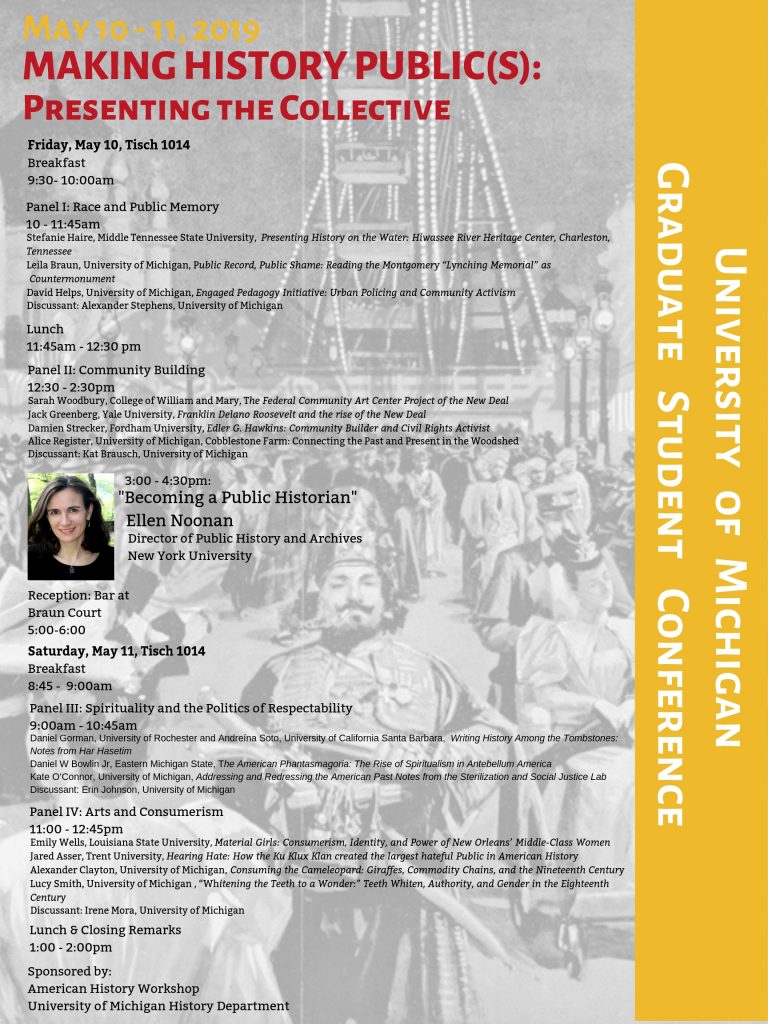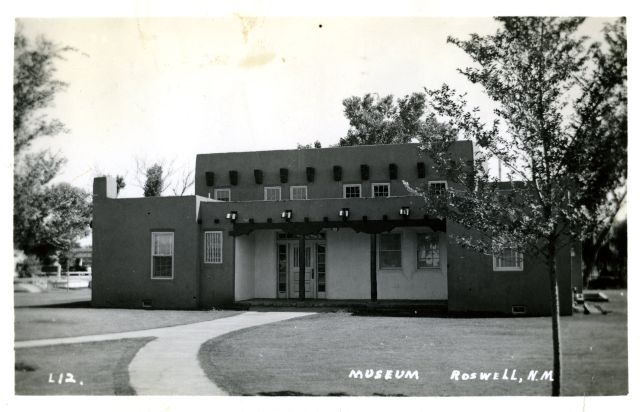I have a habit of ending my academic year somewhat frantically. At the end of my first year at Williams, I turned in all my papers a week early so that I could start a summer fellowship at the Old York Historical Society. The following year, barely a week after graduating, I moved from New England to Wyoming to commence an internship at the National Museum of Wildlife Art. This year, I drove 12 hours to Michigan the day after I turned in my last paper to present at a conference.
But what a conference! As harried as I may have felt preparing for it, I’m really glad I went.

The conference in question was “Making History Public(s): Presenting the Collective,” sponsored by the University of Michigan’s History Department. The topic of the conference, as the title suggests, was public history. Many of the papers addressed the practical side of teaching public history, with examples including a paper describing the collaborative process of reinterpreting of a historic farm space on a limited budget, or a paper describing a potential class syllabus on police brutality. Others dealt with more historical instances of public-building, as was the case in a paper describing the infrastructure needed to transport live giraffes to the United States during the 19th century, or a presentation exploring the racial and gender implications of teeth whitening during the 18th century.

My paper fell into the latter camp, as I was talking about the Roswell Museum’s public building during the WPA era. Essentially I explored federal art centers as venues for both art education and community-building through a case study of the Roswell Museum and Art Center in New Mexico, as it’s the art center I still know best at this point. I argued that from its inception, the Roswell Museum navigated ongoing tensions between the expectations of its local sponsors and federal staff regarding public outreach and engagement, as federal personnel and local supporters often had different expectations for the museum. Despite these disagreements, the museum consistently attempted to address multiple audiences by inviting visitors to contribute objects to exhibitions, offering classes at different locations in town, and acting as a performance space. After providing an overview of these activities, I then shared a few pages from my Scalar book as a means of showing how digital scholarship can begin to render the publics affiliated with these institutions more readily visible.

This was a great conference for me for several reasons. From a topical standpoint, this was the first time I participated in a conference in a discipline other than art history or museum studies, so it was a good way to test whether my work really is interdisciplinary enough to engage other academic fields. It had also been about two years since I last presented in this type of academic setting, so it was a good opportunity to refamiliarize myself with that process.
Most importantly, I got some good feedback about my work, received helpful suggestions or recommendations for moving forward, and made some great new contacts. As I mentioned in a previous post, I participated in a lot of conferences when I was working, but the papers usually related to an exhibition I was working on at the time. As soon as the show opened, my research on it usually ceased so that I could move on to the next thing. I’m going to be living with my art center work for a long time though, so conferences will be a good way to present ongoing work and new ideas as I keep digging into the subject. If nothing else, the reception I got at this conference was a good reminder that the work I’m doing is interesting and worthwhile to people other than myself.
The conference was good for more than academics, however. Stay tuned next week to learn about my adventures in Michigan itself.